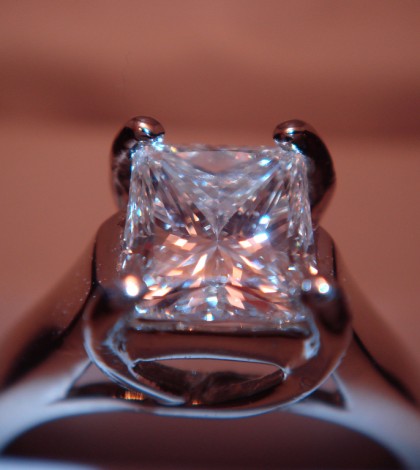No, Marilyn Monroe was not the first bombshell to proclaim that diamonds a girl’s best friend. In the Middle Ages, a diamond was thought to reconcile wayward spouses and to keep people out of harm’s way.
Today finding the perfect ring is a little bit challenging, as a diamond ring represents elegance, class and a token of your true love’s esteem. To make sure that your beautiful bauble lasts forever, you’ll need a primer using the Gemological Institute of America’s (GIA) grading system also known as the “4c’s”: cut, color, carat and clarity.
A diamond’s certificate includes grades for: the color of the stone, the lack of flaws, the quality of the cut or jeweler’s artisanship and the rarity of the stone.
Using the following information will not only teach you how to purchase a diamond, it will also help you understand the characteristics that distinguish one gem from another.
Cut
Cut refers to the cutting style, proportions and shape of the stone. It is the only aspect of the stone that is the result of the jeweler’s intervention. Popular diamond cuts include: round (the most popular shape), pear, oval, emerald, marquise, cushion and square. The cut also refers to how the diamond reflects light.
In the end, it is best to get the highest grade your money can buy. The GIA ranks a diamond’s cut in five categories: Excellent, Very Good, Good, Fair or Poor.
Clarity
Yes, every diamond has natural flaws. Many stones have blemishes and inclusions such as, scratches, pits, specks, chips or cracks. The bigger the stone however, the more flawlessness or clarity matters.
There are 11 grades in the GIA clarity scale, ranging for F or FL (flawless) to I (prominent inclusions.) As no two diamonds are alike, the number of inclusions and the diamond’s purity determines a stone’s true value.
For a stone that is one carat or less, choose a GIA grade of at least SI1, (flawed or slightly included); for a bigger stone, select a VS1 or V2 which means the diamond is very slightly included.
Color
Most diamonds contain slight traces of brown or yellow; only the rarest and most precious diamonds are white or colorless. Diamond colors can range from pink, red, yellow, brown, green, blue to black and nearly colorless.
The GIA uses a lettering scale to judge the coloring from D (colorless) to Z (light brown or yellow.) The most valuable gems are rated from D to F. When selecting the best diamond for your fiancée, choose a jeweler who has a master set of stones in different ranges to help you select the best color.
Carat
A carat is a unit of measurement for a diamond’s weight divided into 100 points. To determine the carat of the stone, the diamond is weighed on an electric scale. One carat has the diameter of 6 millimeters and weighs about 200 milligrams, or the same weight of a paper clip.
The origin of the term carat is from the Arabic word for carob. Carob sees were used to determine the weight of the diamonds: One carob seed equals one carat.
Diamonds with similar carat weight may vary as it relates to cost due to each stone’s clarity, cut and color value.
About the author:
Monica Reif is a writer and blogger and loves to write about subjects where life meets fashion. Follow her @monicareif

